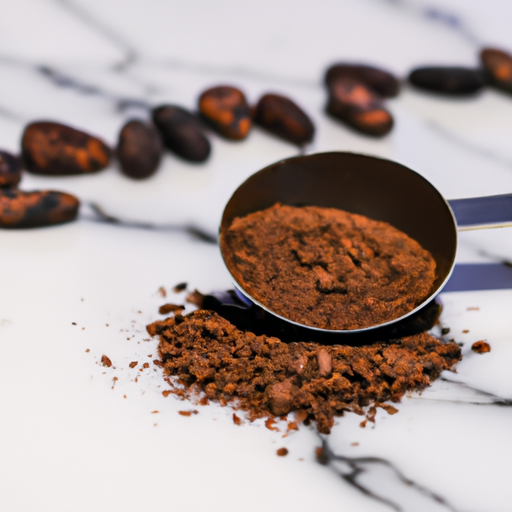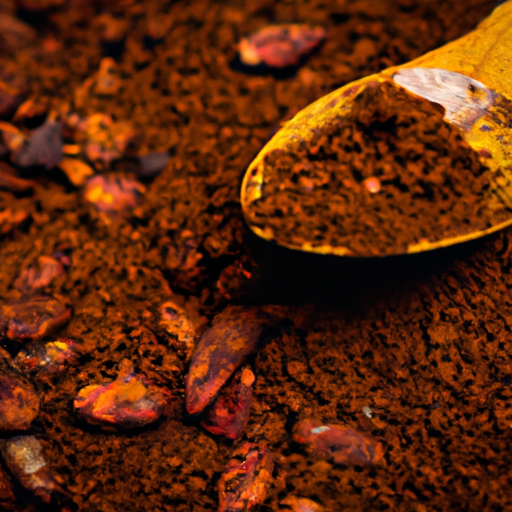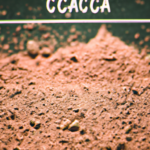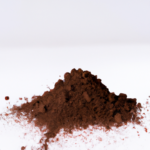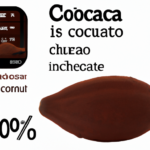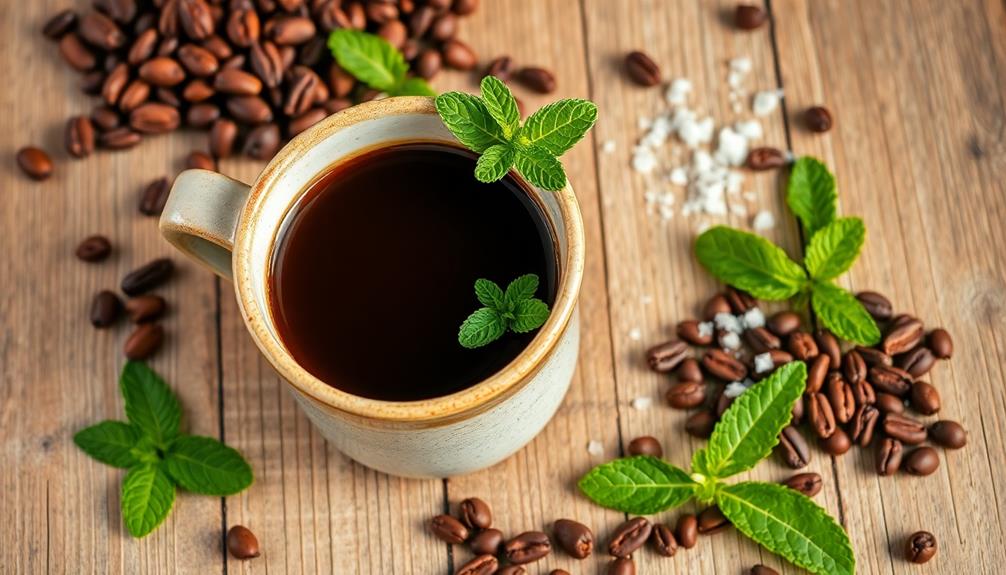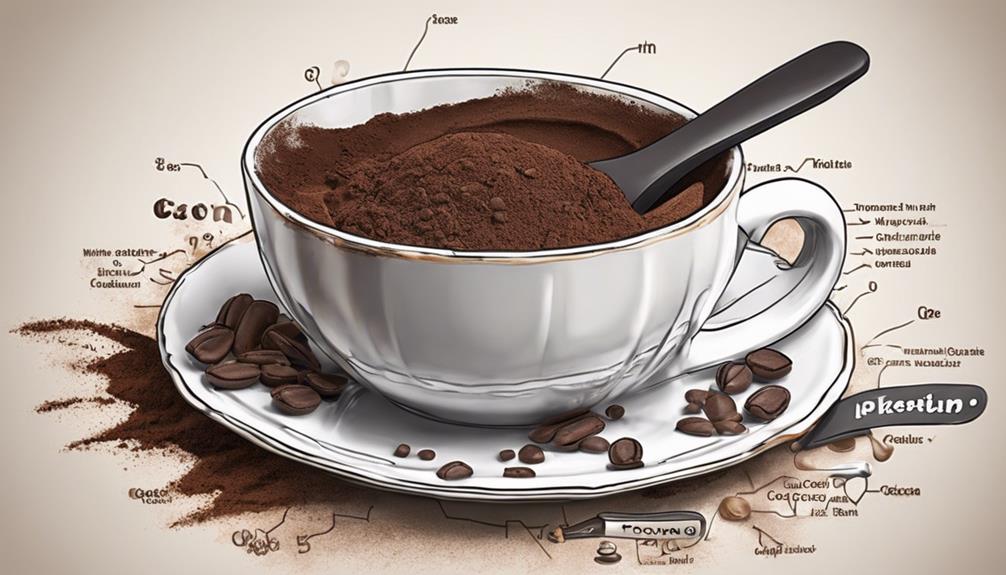Ah, the wonderful benefits of raw cacao powder. You may be familiar with its delicious flavor and how it enhances our favorite treats. But have you ever thought about the hidden advantages and mysteries it possesses? Today, we are exploring the world of theobromine, a potent compound present in this delightful treat.
In this article, we will explore the amount of theobromine present in raw cacao powder and how it compares to other cacao products. We will also dive into the effects of processing on theobromine content and how it impacts the flavor and taste.
But it doesn’t stop there. We will also discuss the health benefits of theobromine and the potential side effects of consuming it. And fear not, for I will guide you through the safe consumption levels of this compound.
So, sit back, relax, and let’s embark on this fascinating journey through the world of theobromine and raw cacao powder.
Key Takeaways
- Theobromine levels in raw cacao powder affect taste perception and mouthfeel.
- Consuming excessive theobromine can lead to increased heart rate and digestive issues.
- Sensitivity to theobromine varies among individuals.
- Safe consumption levels of theobromine in raw cacao powder are essential for well-being.
A Brief Overview of Cacao and Theobromine
Raw cacao powder contains a significant amount of theobromine, a natural compound with fascinating effects on our bodies.
Cacao, the plant from which cacao powder is derived, has a rich history and cultural significance. It is believed to have been cultivated by ancient civilizations in Mesoamerica as early as 1900 BC. The cultivation of cacao played a crucial role in the economy and society of these civilizations. Cacao beans were used as currency and consumed in sacred rituals.
Today, cacao is grown in various parts of the world, including South America, West Africa, and Southeast Asia.
Theobromine, one of the main active compounds in cacao, is known for its stimulating effects on the central nervous system. It has the ability to enhance mood and cognitive function. Theobromine also has potential health benefits, which will be explored in the next section.
The Health Benefits of Theobromine
The health benefits of theobromine are numerous and have been extensively studied.
First, theobromine has been found to enhance mood by increasing dopamine and serotonin levels in the brain, leading to feelings of happiness and relaxation.
Second, theobromine has been shown to promote cardiovascular health by improving blood flow, reducing inflammation, and lowering blood pressure.
Lastly, theobromine is known for its antioxidant properties, which help protect the body against oxidative stress and prevent cellular damage.
Overall, theobromine is a powerful compound with a range of health benefits that contribute to overall well-being.
Mood Enhancement
Feeling down? Adding raw cacao powder to your diet can boost your mood, thanks to its theobromine content. Theobromine, found in high amounts in cacao, has been shown to have mood-enhancing effects.
It works by regulating mood and stimulating the production of serotonin, a neurotransmitter known for its mood-regulating properties. Serotonin helps to improve feelings of happiness and well-being, and its levels are often low in individuals experiencing depression or anxiety. By increasing serotonin production, the theobromine in raw cacao powder can help improve mood and promote a sense of calm and relaxation.
Additionally, theobromine has been found to have mild stimulant effects, providing a natural energy boost. So, incorporating raw cacao powder into your diet can not only enhance your mood but also give you the energy you need to tackle the day.
Moving on to cardiovascular health, consuming theobromine-rich cacao may have positive effects on heart health.
Cardiovascular Health
Looking to boost your cardiovascular health? Indulging in a delicious treat like dark chocolate can be a delightful way to support your heart.
Numerous studies have shown that cocoa consumption, particularly in the form of dark chocolate, can have positive effects on cardiovascular health. The key ingredient responsible for this benefit is theobromine, which is found in high amounts in raw cacao powder. Theobromine acts as a vasodilator, meaning it relaxes and widens the blood vessels, thereby reducing blood pressure and improving blood flow.
Additionally, cocoa consumption has been associated with a decrease in LDL cholesterol levels and an increase in HDL cholesterol levels, further promoting cardiovascular health. So, by enjoying a small amount of dark chocolate rich in theobromine, you can give your heart a little extra love.
Moving on to the subsequent section about ‘antioxidant properties’, it’s important to note that cocoa is also packed with powerful antioxidants that can benefit your overall health.
Antioxidant Properties
Craving a delicious treat that also packs a punch of health benefits? Well, you’re in luck because dark chocolate is here to save the day with its antioxidant properties.
Antioxidant research has shown that consuming dark chocolate, which is rich in cocoa, can help fight against oxidative stress and reduce the risk of chronic diseases.
Theobromine, a compound found in cocoa, has been studied for its potential in improving cardiovascular health and boosting cognitive function. Additionally, theobromine supplementation has been found to have positive effects on blood pressure and blood vessel function.
So, indulge in a piece of dark chocolate and reap the benefits of its antioxidant properties.
Now, let’s dive into the theobromine content in raw cacao powder, a key component of dark chocolate.
The Theobromine Content in Raw Cacao Powder
To truly understand the theobromine content in raw cacao powder, you should familiarize yourself with its chemical composition. Theobromine, a bitter alkaloid, is one of the key components found in cacao beans. It belongs to the methylxanthine family, which also includes caffeine. Theobromine is metabolized by the liver and has various effects on the body, such as stimulating the central nervous system and dilating blood vessels.
Raw cacao powder is a rich source of theobromine, containing higher levels compared to other cacao products. This is due to the minimal processing that raw cacao powder undergoes, preserving its natural compounds. Theobromine content can vary depending on factors such as the type of cacao bean and its origin.
Understanding the theobromine content in raw cacao powder is crucial when comparing theobromine levels in different cacao products. This knowledge allows for a comprehensive analysis of the variations and potential benefits of these products.
Comparing Theobromine Levels in Different Cacao Products
Indulge in the rich variety of cacao products and discover the tantalizing differences in theobromine levels that will send your taste buds on a blissful journey.
When it comes to theobromine levels, dark chocolate takes the lead. Dark chocolate typically contains higher levels of theobromine compared to milk chocolate. This is because dark chocolate is made with a higher percentage of cacao solids, which naturally contain more theobromine. On the other hand, milk chocolate has a lower cacao content and is usually mixed with milk powder, sugar, and other additives, resulting in a lower theobromine content.
So, if you’re looking for a chocolate treat with a higher theobromine kick, opt for dark chocolate.
Transitioning into the effects of processing on theobromine content, it’s important to consider how different processing methods can impact the levels of this delightful compound.
The Effects of Processing on Theobromine Content
When comparing theobromine levels in different cacao products, it is essential to consider the effects of processing on theobromine content. The way cacao beans are processed can significantly impact the potency of theobromine.
Heat, for example, can degrade theobromine, reducing its levels in the final product.
Fermentation, on the other hand, can increase theobromine levels as it allows for the breakdown of complex compounds in cacao beans.
These effects of heat and fermentation on theobromine levels highlight the importance of understanding the processing methods used in the production of cacao products. By considering these factors, we can better understand the variation in theobromine content between different cacao products.
Moving forward, let’s explore how theobromine content impacts flavor and taste.
How Theobromine Content Impacts Flavor and Taste
The level of theobromine in processed cacao products significantly affects the overall flavor and taste experience. Theobromine, a bitter alkaloid found in cacao, contributes to the complex flavor profile of chocolate. Higher theobromine content can result in a more pronounced bitterness, while lower levels can lead to a milder taste.
This flavor impact is crucial in determining the sensory experience of consuming cacao-based products. Theobromine interacts with the taste receptors on our tongues, enhancing the perception of bitterness and influencing the overall taste perception. Additionally, theobromine can also contribute to the aroma and mouthfeel of chocolate, further influencing the overall flavor experience.
Understanding the relationship between theobromine content and flavor can help manufacturers create products that cater to different taste preferences.
Transitioning into the subsequent section about potential side effects of consuming theobromine, it is important to consider the impact of this alkaloid on our health.
Potential Side Effects of Consuming Theobromine
Consuming high levels of theobromine can have potential side effects that may impact our overall health and well-being. It is important to be aware of these potential side effects before incorporating large amounts of theobromine into our diet. One potential side effect is the occurrence of allergic reactions in some individuals. These reactions can range from mild symptoms such as itching and hives, to more severe symptoms like difficulty breathing and swelling of the face or throat. Another potential side effect is the impact on sleep patterns. Theobromine is a stimulant that can interfere with sleep by increasing alertness and making it difficult to fall asleep or stay asleep. To better understand the potential side effects of theobromine consumption, refer to the table below:
| Potential Allergic Reactions | Effects on Sleep Patterns |
|---|---|
| Itching and hives | Difficulty falling asleep |
| Difficulty breathing | Difficulty staying asleep |
| Swelling of face or throat | Increased alertness |
Understanding these potential side effects can help us make informed decisions about the amount of theobromine we consume. Moving forward, it is essential to explore safe consumption levels of theobromine without compromising our health and well-being.
Safe Consumption Levels of Theobromine
To ensure our well-being, it’s crucial to find the right balance in incorporating theobromine into our diet and understanding its safe consumption levels. When it comes to the safe dosage of theobromine, there are a few important factors to consider:
-
Body Weight: The safe consumption level of theobromine varies depending on an individual’s body weight. A general guideline is to consume no more than 10 milligrams of theobromine per kilogram of body weight.
-
Sensitivity: Some individuals may be more sensitive to the effects of theobromine than others. It’s important to monitor your body’s reaction and adjust your consumption accordingly.
-
Potential Risks: Consuming excessive amounts of theobromine can lead to side effects such as increased heart rate, anxiety, and digestive issues. It’s essential to be aware of these risks and consume theobromine in moderation.
In conclusion, understanding the safe consumption levels of theobromine is crucial to enjoy the delights of raw cacao powder without any potential risks.
Conclusion: Enjoying the Delights of Raw Cacao Powder
Indulge in the exquisite pleasure of savoring the delectable essence of unprocessed cacao. Enjoying raw cacao powder not only provides a delightful taste experience but also offers numerous health benefits.
Raw cacao is rich in theobromine, a natural compound that stimulates the central nervous system and has a mild stimulating effect. Theobromine is known to promote relaxation, improve mood, and enhance cognitive function.
Additionally, raw cacao powder contains powerful antioxidants that help protect the body against cell damage caused by harmful free radicals. These antioxidants can have a positive impact on heart health, lower blood pressure, and improve cholesterol levels.
With its rich flavor and health-boosting properties, raw cacao powder is a guilt-free pleasure that can be enjoyed as part of a balanced and nutritious diet.
Frequently Asked Questions
Can raw cacao powder be consumed by individuals with caffeine sensitivity?
If you’re sensitive to caffeine, you may still enjoy raw cacao powder. It can aid in weight loss and doesn’t have as much caffeine as coffee. Theobromine in it may even lower blood pressure.
What is the recommended daily intake of theobromine for adults?
The recommended daily intake of theobromine for adults varies depending on factors such as age and overall health. However, consuming moderate amounts of theobromine from sources like cacao powder has been associated with various health benefits.
Is theobromine content affected by the country of origin of the cacao beans?
Theobromine content in cacao beans can be influenced by the country of origin. Different regions have varying soil composition, climate, and cultivation practices, which can affect the levels of theobromine in the beans. Further research is needed to fully understand the extent of this impact.
How does theobromine content in raw cacao powder compare to that in dark chocolate?
The theobromine content in raw cacao powder is significantly higher than that in dark chocolate. This means that raw cacao powder offers greater health benefits from theobromine compared to dark chocolate.
Are there any known interactions between theobromine and certain medications?
There are known interactions between theobromine and certain medications. Theobromine can increase blood pressure, which may be problematic when combined with medications that also affect blood pressure.
Does Raw Cacao Powder Have a High Magnesium Content Along With Theobromine?
Raw cacao powder indeed boasts a high magnesium content, making it a desirable choice for those seeking this essential mineral. Additionally, cacao powder contains theobromine, which contributes to its unique flavor and offers potential health benefits. Embrace the rich taste and reap the potential advantages of magesium content in cacao powder.
Conclusion
In conclusion, after delving into the depths of raw cacao powder, it is clear that this heavenly concoction is not only a delight for the taste buds but also a treasure trove of health benefits.
One of the key components of raw cacao powder is theobromine, which brings forth a plethora of goodness. It has been found to boost cardiovascular health by improving blood flow and lowering blood pressure. Additionally, theobromine has mood-enhancing properties, as it stimulates the release of endorphins and serotonin in the brain, promoting feelings of happiness and well-being.
However, it is important to note that like all good things, moderation is key when consuming raw cacao powder. Theobromine, in large amounts, can have unwanted side effects such as jitteriness, increased heart rate, and even digestive issues. Therefore, it is advisable to enjoy the magic of raw cacao powder in moderation and with wisdom.
By savoring this delectable treat responsibly, we can truly experience the blissful benefits that raw cacao powder has to offer.

